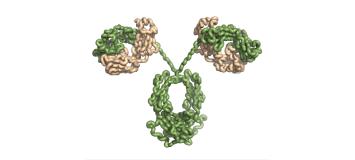
Introduction
IgAN is the most common pattern of primary glomerular disease worldwide and remains a leading cause of chronic kidney disease and kidney failure. Most commonly, IgAN is asymptomatic and follows a slowly progressive course with approximately 25–30% of any cohort developing kidney failure within 20–25 years of presentation.1
The management of IgAN encompasses rigorous blood pressure control, optimal inhibition of the renin-angiotensin system, and lifestyle modification. Evolving insights into the mechanisms driving this disease have led to the approval of a targeted-release formulation of budesonide, the first and currently only treatment approved specifically for IgAN.1
Although IgAN is characterized by a single histopathologic criterion of predominant or codominant IgA deposits on kidney biopsy, its marked heterogeneity of clinical and pathological features is now well-recognized.1
Program Content

Faculty

Jonathan Barratt, PhD FRCP:
Professor of Renal Medicine & Consultant Nephrologist at the University of Leicester in the United Kingdom.
Learning Goal/Purpose
The goal of this activity is to increase clinicians’ knowledge and competency in IgAN diagnosis and evidence-based management strategies, in both primary diagnostic and post-transplant recurrence settings.
Learning objectives
After completing this educational activity, learners should be able to:
- Describe the immunopathophysiology of IgAN, exploring the role of the mucosal immune system in IgAN.
- Discuss relevant diagnostic tests which may be deployed to establish a first diagnosis of IgAN and to differentiate between graft rejection and post-transplant IgAN recurrence.
- List management options for adult patients with IgAN and provide an overview of their mechanism of action, efficacy and safety.
- Explain how targeted-release budesonide differs from other corticosteroids and discuss key clinical data (e.g. Nef301, NEFIGAN, NEFIGARD).
- Determine the most appropriate management strategy for an individual patient, by interpreting and applying guidelines for the diagnosis and treatment of IgAN, and considering patient characteristics, clinical factors, and the safety and efficacy of available agents.
Target Audience
This activity is intended for healthcare professionals who manage patients with IgAN, including nephrologists, immunologists, internal medicine specialists, and primary care physicians in the United States.
Enduring Materials CE Activity
Upon completion of this activity, the deadline to complete the evaluation form to obtain CME credits is December 2023.
This activity has passed its expiration date.
Disclosures
Jonathan Barratt PhD FRCP
Prof. Barratt has disclosed the following financial relationships:
- Consultancy work and grant for research: Calliditas.
Rita Aresta MD
Scientific Content Manager
Rita Aresta MD has disclosed no financial relationships.
References:
1) Kidney Disease: Improving Global Outcomes (KDIGO) Glomerular Diseases Work Group. KDIGO 2021 clinical practice guideline for the management of glomerular diseases. Kidney Int. 2021;100(4S):S1–S276.

